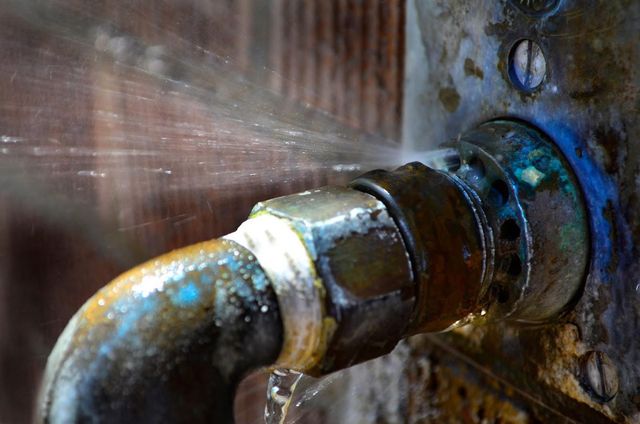We have stumbled upon the article involving Detecting hidden plumbing leaks down the page on the internet and accepted it made perfect sense to discuss it with you over here.

Early discovery of leaking water lines can alleviate a potential calamity. Aside from conserving you cash, it will certainly minimize the irritation and frustration. The minute you discover a leak, calling your plumber for repair work is the most effective solution. However, some small water leakages may not show up. If you can not spot it with your nude eyes, here are some hacks that assist.
1. Examine the Water Meter
Every home has a water meter. Checking it is a guaranteed way that aids you find leaks. For beginners, switch off all the water sources. Ensure no person will purge, utilize the faucet, shower, run the washing equipment or dishwasher. From there, most likely to the meter and also watch if it will transform. Because no person is using it, there must be no activities. That suggests a fast-moving leak if it moves. If you find no changes, wait a hr or two and also examine back once more. This implies you may have a slow leak that can also be underground.
2. Examine Water Intake
If you find unexpected modifications, regardless of your usage being the exact same, it indicates that you have leakages in your plumbing system. A sudden spike in your bill indicates a fast-moving leak.
A constant rise every month, also with the same behaviors, reveals you have a slow-moving leak that's also slowly rising. Call a plumber to thoroughly examine your home, specifically if you feel a cozy area on your floor with piping below.
3. Do a Food Coloring Test
When it involves water consumption, 30% originates from bathrooms. Examination to see if they are running correctly. Decrease flecks of food color in the storage tank and wait 10 mins. There's a leak in between the container and also dish if the color somehow infiltrates your dish throughout that time without flushing.
4. Asses Outside Lines
Don't forget to check your outdoor water lines too. Examination faucets by connecting a yard pipe. Must water seep out of the connection, you have a loosened rubber gasket. Change this as well as make certain all connections are tight. If you've got a sprinkler system, it will assist get it properly checked out as well as maintained every year. One little leak can waste lots of water as well as spike your water expense.
5. Check and Evaluate the Scenario
Homeowners should make it a behavior to examine under the sink counters and also even inside cabinets for any kind of bad odor or mold and mildew growth. These 2 warnings suggest a leakage so prompt focus is needed. Doing routine inspections, also bi-annually, can save you from a major issue.
If you understand your residence is currently old, maintain a watchful eye on your heaters, hoses, pipes and so on. Check for stainings and compromising as the majority of pipelines and devices have a life expectancy. They will additionally naturally weaken because of deterioration. If you suspect dripping water lines in your plumbing system, don't await it to rise. Call a professional plumber immediately so you don't end up with a dreadful mess in your house.
Early discovery of dripping water lines can reduce a potential disaster. Some little water leaks may not be visible. Checking it is a surefire way that aids you discover leaks. One small leakage can throw away heaps of water and also increase your water costs.
If you believe dripping water lines in your plumbing system, do not wait for it to rise.
WARNING SIGNS OF WATER LEAKAGE BEHIND THE WALL
PERSISTENT MUSTY ODORS
As water slowly drips from a leaky pipe inside the wall, flooring and sheetrock stay damp and develop an odor similar to wet cardboard. It generates a musty smell that can help you find hidden leaks.
MOLD IN UNUSUAL AREAS
Mold usually grows in wet areas like kitchens, baths and laundry rooms. If you spot the stuff on walls or baseboards in other rooms of the house, it’s a good indicator of undetected water leaks.
STAINS THAT GROW
When mold thrives around a leaky pipe, it sometimes takes hold on the inside surface of the affected wall. A growing stain on otherwise clean sheetrock is often your sign of a hidden plumbing problem.
PEELING OR BUBBLING WALLPAPER / PAINT
This clue is easy to miss in rooms that don’t get much use. When you see wallpaper separating along seams or paint bubbling or flaking off the wall, blame sheetrock that stays wet because of an undetected leak.
BUCKLED CEILINGS AND STAINED FLOORS
If ceilings or floors in bathrooms, kitchens or laundry areas develop structural problems, don’t rule out constant damp inside the walls. Wet sheetrock can affect adjacent framing, flooring and ceilings.
https://www.servicemasterbyzaba.com/blog/how-to-detect-water-leakage-in-walls/

As a person who reads about Locating water leaks, I imagined sharing that piece of content was sensible. Do you know somebody else who is enthusiastic about Detecting hidden plumbing leaks? Be sure promote it. We treasure reading our article about Locating water leaks.